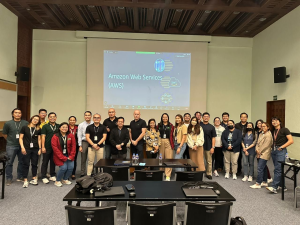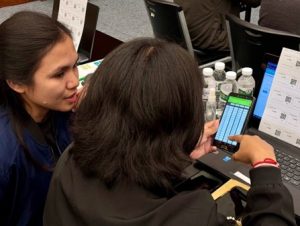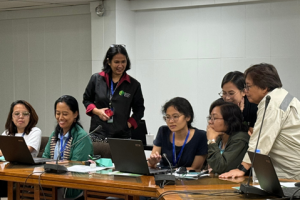The Enterprise Breeding System (EBS) was conceived to fill a critical gap in CGIAR breeding: an end-to-end data management system of the sophistication required to run a modern breeding program taking advantage of the latest technologies and approaches.
In 2023, the development phase of the Enterprise Breeding System (EBS) software will end, meaning that the EBS is a complete system for the end-to-end management of breeding data, ready to become operational across any kind of breeding program. This will mark a point in the evolution of the EBS project in which “the EBS team is going beyond software”, according to Andre Embersics, EBS project manager and Breeding IT lead in the CGIAR Breeding Resources Initiative.
To realize the transformation of CGIAR crop breeding, three major processes will be set in motion: consolidation of the EBS as the only breeding software used at CGIAR, the adoption of a platform-as-a-service model, and integration with the Breeding IT work package of the CGIAR Breeding Resources Initiative.
1. EBS consolidation
At present the EBS is one of three data management systems used within CGIAR. When EBS completes the development stage and becomes fully operational, the development team will continue to work on user-requested features and crop-specific needs. Other breeding data management software such as the Breeding Management System and BreedBase will continue to be maintained as the transition to EBS takes place at all CGIAR centers,
2. EBS as PaaS – Platform-as-a-Service
The breeding programs that currently have EBS environments are responsible for purchasing and maintaining their own cloud computing and storage resources to host EBS. CIMMYT KMIT team, for example, has purchased and operates the platform on which CIMMYT instances of EBS run. This model does not scale well for wider adoption and is untenable for breeding programs without the means to operate their own cloud platform. This model is hard to sustain for smaller breeding programs, especially during times such as planting when their use of breeding software is lower.
The solution for that, which will start to be implemented in 2023, is to update EBS and offer it as a service through online tools that are known as Platform-as-a-Service (PaaS), provided by AWS. This eliminates the requirement of a center-based team to purchase and operate the platform, allows for easier management of the system by the EBS team, and provides means for EBS to dynamically scale and adjust its computing resources according to the usage.
Therefore, during times of heavy EBS usage, like planting or harvest, our system will stay responsive. During periods of low system usage such as growing or fallow time, EBS will remain available but with dramatically lower platform costs.
For breeding programs adopting EBS in 2023, this new PaaS model will be offered as their primary option for the system. For programs already using EBS, PaaS is an option to transition over to, in many cases meaning reduction of time and means spent on hosting and maintaining separate platforms.
3. EBS transition from development to operational phase
2023 is the last year with EBS being organized as an IT development program. After 2023 EBS will be an operational part of CGIAR, continuing development based on interaction with users, and expanding its reach to new centers, programs and crops inside and outside CGIAR.
Currently, the EBS Team is working on finalizing the Milestone 6 development phase. Following that the team will start defining the scope of the last milestone within the development phase, Milestone 7, while still operating under a development program structure.
The CGIAR consortium of agricultural research centers is undergoing a transition towards a new structure made up of cross-cutting initiatives. Once the EBS development phase is completed at the end of 2023, the EBS team will be relocated within the Breeding Resources Initiative, largely as part of the Breeding IT unit. Despite this, the EBS will continue to exist as a distinct program.
“The main difference between EBS and Breeding IT is that at the moment, as we are organized under a Project framework with a clearly defined scope, we have to limit ourselves in terms of what features or capabilities for the system we can include as we go and that differs from our original plan, which sometimes can also limit the amount of feedback we can incorporate in the project”, said Embersics. “Once we are under the BR structure, it is more fluid and exciting for the users: we will function based on users’ feedback, opening up EBS for further improvements and continuous expansion. This is what I like the most about our future relocation under a brand new CGIAR structure: all the new possibilities that will come with it!”
The current EBS team will also expand beyond software development: “We will serve as a taskforce to provide breeding IT to whomever needs it. I foresee a more dynamic interaction for the EBS team across CGIAR, working on multiple projects.”







